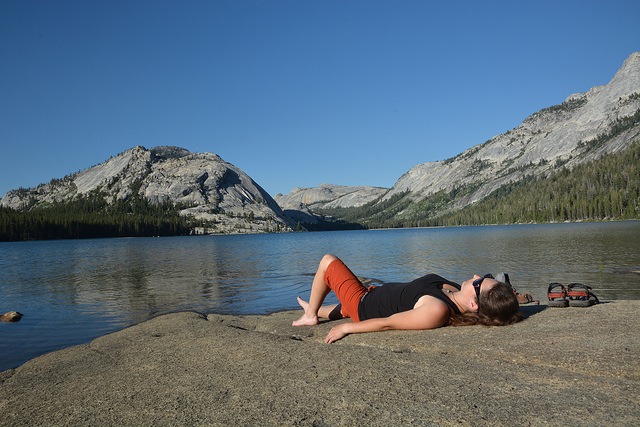
If you struggle with anger and rage, then you’re very familiar with two things.
The buildup, when you’re starting to feel frustrated and angry. Someone won’t shut up, or things just won’t go right, and you can feel the pressure building.
The blowup, that moment when you finally snap, and you no longer have control over what you say or do. Maybe you punch a wall, or you shout at your spouse or children.
What if there were ways you could control the anger enough to prevent the blowup?
That’s exactly what I’m going to to teach you: how you can prevent the blowup when things are frustrating.
And you don’t have to know a thing about psychology to do it.
First, you need to know a little about how the body responds to anger. When you get mad, you almost certainly experience the following:
- more shallow, rapid breathing;
- increased heart rate;
- increased muscle tension, especially in the shoulders, neck, and core;
- the sensation of getting hot, often around the face or head.
These sensations are experienced during the buildup of anger and frustration. But they aren’t just caused by anger, these sensations also cause you to be more likely to get angry.
And that means that if these sensations disappear, it is physically impossible to become as angry or rageful.
So that is what you’re going to focus on: reducing these sensations to prevent the blowup.
Step 1: Breathing and Heart Rate
Your breathing happens automatically if you let it. But you can also take direct control of it. And by directly controlling your breathing, you can indirectly control your heart rate. Let’s make that our first step to preventing the big blowup.
When you’re in the buildup phase, you know it. You can feel yourself becoming more upset and frustrated.
This is the moment to take direct control of your breathing.
With each breath, take in as much air as you can.
Make your breaths very slow and even.
Nothing more complicated than that. Deep, slow breaths. By doing this, you signal your body to be in a more relaxed state. As your breathing and heart rate decrease, your brain is no longer sending and receiving as many anger signals. This means it will take you much longer to reach the blowup phase.
To make this step work properly, you should spend at least 2-5 minutes taking slow, deep breaths. Go somewhere quiet if you can, but this step can be easily done in any situation.
Step 2: Muscle Tension
Most people can’t conciously relax their major muscle groups when they have tension. So I’m going to teach you how to trick your body into releasing it.
First, figure out the three spots where your “anger tension” gets held the most. The most common areas are: neck and shoulders; chest; back; stomach; arms and hands; or upper legs.
Once you have your top three, you can move to the next step.
Select your first tension spot, and tense the muscles there as hard as you can (if you have injuries or medical conditions, please do not injure yourself).
Hold the tension until the muscle really starts to burn. Once it is burning nicely (usually about 60 seconds), release the muscle. You will end with less tension in the muscle than when you started.
Repeat this with each of the muscle groups you picked. Make sure to tense the muscles hard and maintain the tension, because the more you do this, the more the muscle is forced to relax.
This step is much harder to do effectively with other people around, unless you’re comfortable with them thinking you’re a bit odd. Excusing yourself to the bathroom is generally a good way to get the necessary space to do this step.
Step 3: Reducing the Heat
Have you ever noticed that when you get angry, people might tell you to “cool down”? Ever wonder why?
The heat from anger is a real body response. And if you interrupt that response, it is harder for you to be angry.
So the final step is physically cooling the body.
There are a lot of ways to do this, so I’m going to suggest a few that have worked for my clients.
If you have the time and ability, taking a cool (or cold) shower is ideal.
But if you don’t have the ability or inclination to do that, many people have found success by running cold water over their hands, and rubbing it over the face and neck. The hands and head are the two primary areas where cooling seems to help with anger. Just remember that a quick splash probably won’t do it. There has to be an actual temperature drop, so you might have to spend a couple of minutes doing this.
Another very simple way depends on the season. I am writing this on a winter day. A simple step out the door today would help a person cool off rapidly. If the weather is cold, taking a ten minute walk outside may be all that’s needed to cool off. Just remember to dress for cooling off instead of retaining heat.
These are three simple ways to interrupt your body’s response to anger. By taking direct control of your physiology, you make it impossible to be as upset or as angry. Every client I’ve taught these steps to has reported that it is easier to stay out of the blowup phase of anger.
Remember: this doesn’t treat a predisposition to anger, and it won’t completely eliminate frustration or upsetness, but it will at least keep you from blowing up as often or as badly. If you have to use these steps, it’s a good idea to consider doing some counseling work so that you eventually don’t need them.
Photo: Chillin’ by Stanislav Ochotnicky / is licensed under CC BY 2.0
Give us a follow